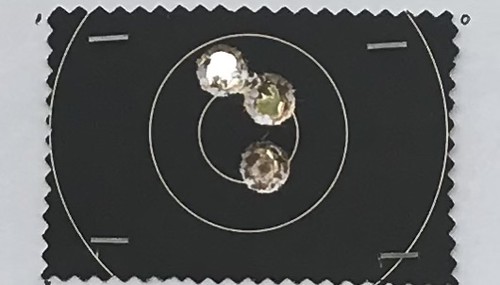On FLINTLOCK sub-forum I posted a thread for lubricating a round ball to try my years old DOUBLER device. DOUBLER creates stochastic indentations that act on the severe air drag on smooth round balls, the thing that those pock marks in golf balls that add many yards to golf shots until the green is reached. If the DOUBLER really adds yards — that is, significantly improves retained velocity, significantly reduces ball deflection from side winds— could a larger diameter round ball about .001 inch less than bore diameter be used? Gene Gordner, the Kalispell, Montana, gun maker who created my beautiful matched pair of English-style percussion rifles, informed me that ramrod loaded conicals can use bullet diameters .001 inch less than bore diameter. This allows several-to-many bullets to be conventionally loaded before fouling becomes an issue.
Bullets carry lubrication with them as they travel up the barrel. Round balls are surrounded during such travel by lubricated patches. If the patch becomes an unnecessary unlubricated wad or card protecting only powder from lubricant, if pebbled surface of round ball run through a DOUBLER is dry lubed like what some hand casters use, the bullet diameter stolen by the patch is again bullet diameter. Incrementally sized new/used/loaned round ball molds are cheap in several calibers. if DOUBLER is no longer available, a facsimile can be made for chump change. My English-sytyled big bore rifles do not have cheaply available round ball molds available. I have used only mallet-loaded conicals in them. My "hunt cape buffalo in South Africa" fantasy is no longer possible. I cannot take the beating I practiced to take, and I don't want to. Mold makers offer, for example, many nominal .54-caliber round ball molds that change in .001-inch increments. My .72-caliber rifles don't have such easy availability.
So before I invest $200–250 for a .72x or .73x bullet mold, discussing things with experienced round ball users seems like a worthwhile idea.






